- Study on polyester resin concrete for applications in chemical & power plant industry
S. Lavanya Prabhaa, M. Surendarb, G. Prabhab and A. Mohanb
aProfessor, Department of Civil Engineering, Easwari Engineering College, Ramapuram, Chennai, India 600089
bAssistant Professor, Department of Civil Engineering, Easwari Engineering College, Ramapuram, Chennai, India 600089This article is an open access article distributed under the terms of the Creative Commons Attribution Non-Commercial License (http://creativecommons.org/licenses/by-nc/4.0) which permits unrestricted non-commercial use, distribution, and reproduction in any medium, provided the original work is properly cited.
Polyester polymer resin concrete is a type of concrete that incorporates polyester polymer resins as a binder instead of traditional cement. In this study, concrete was made using three resins: vinyl ester resin, superior vinyl ester resin, and bisphenolresin. The ingredients of polyester polymer resin concrete are three types of polyester resin, 1-2% of Methyl ethyl ketone peroxide (MEKP) as the catalyst, Cobalt Octoate as the Accelerator and N, N-dimethylaniline as the promoter of 1% is used to make the binding resin. Along with binding resin calcium carbonate as filler and fine aggregate (normal riversand) passing through 2.36 mm sieve and retained on 600-micron sieve and course aggregate of size 6mm were used to make the concrete. 36 trail batches were carried out for preliminary investigation targeting a compressive strength of 70 MPa. The shortlisted batches were taken for detailed investigation on mechanical and durability properties. The stress strain behaviouris studied and dynamic modulus,poisons ratio is calculated with various correlative equations for mechanical properties. The durability properties of the resin concrete were assessed as per ACI 515.2R-13 [1966] for the acid and base solutions. By immersing the samples in three diluted acids and two alkaline media, such as 10% sulphuric acid, 10% nitric acid, 10% hydrochloric acid, 10% sodium sulphate, and 10% magnesium sulphate, the durability property is assessed. Variations in compressive strength, mass, and the look of the submerged samples, among other variables, have been studied and it found that the Vinyl ester resin concrete possesses a higher acid resistance property
Keywords: Corrosion resistance storage units, Vinyl ester resin concrete, Acid resistance, polyester concrete, compressive strength
Polymer concretes recognized as building materials supporting sustainable construction due to their superior properties and lower environmental impact than traditional Portland cement concrete. Using polymer binders instead of lime-type cements can lead to reduced greenhouse gas emissions, as cement production is a significant source of carbon dioxide emissions.
The maintenance cost in chemical industries with standard concrete elements to reduce the distress due to chemical attacks is high. Alternative materials with high chemical resistance and strength are required to reduce maintenance costs [6, 11]. Structural Resin concrete may satisfy these requirements. The main resin types available are unsaturated Isophtalic polyester, Orthophalic polyester, epoxy, vinyl ester and acrylic polyester resins [1, 17]. Therefore, a detailed study of resin concrete is essential toidentify the suitable resin.A preliminary investigation is done based on the literature review for different types of commercially available resins [11]. Based on these investigations, suitable types of resin, mix proportion, method of preparation etc., were finalized [6, 9, 18]. A detailed study on the identification mixes was evaluated by studying mechanical properties, chemical resistant properties and durability properties [2, 8].
Polymer concrete, on the other hand, is a type of concrete that uses polymers instead of cement as the binder material (5). This type of concrete can offer several advantages over traditional cement concrete, including better chemical resistance, higher tensile strength, and lower permeability. As a result, polymer concrete can be a good option for structures exposed to harsh environments, such as highways, bridges, and wastewater treatment plants [6, 22].
The polymer can be made from various resins, including unsaturated isophthalic polyester, orthophthalic polyester, epoxy, vinyl ester, and acrylic polyester resins. These resins are the byproducts of different chemical reactions and can provide high-performance, fibre-reinforced composites at a lower cost than traditional concrete [3, 11].
One of the advantages of polymer concrete over traditional cement-based concrete is its increased strength and improved chemical resistance, making it a suitable material for structures exposed to harsh environments or chemical attacks [15, 18]. Polymer concrete can also be used to repair existing structures due to its excellent adhesive capabilities.
While the high cost and difficulties of traditional manufacturing processes have limited the use of polymer concrete in the past, recent advancements have resulted in considerable cost reductions, making it a more viable option for construction projects [19, 23]. In particular, structural resin concrete may offer a cost-effective solution for industries that require high chemical resistance and strength to reduce maintenance costs [4, 16].
Polymer concrete, made from resins like epoxides and unsaturated monocarboxylic acids, can provide high-performance, fibre-reinforced composites at a lower cost than traditional Portland cement concrete [21]. Using carboxylic acids as a source of terminal reactive double bonds can also improve the material properties of the composite [5, 18].
Compared to traditional cement-based concrete, polymer concrete has several advantages, including increased strength, better chemical resistance, and lower permeability [4, 5]. This makes it a suitable material for a wide range of applications, including constructing and repairing structures, highway pavements, and drainage pipes [7, 17].
Additionally, fibre reinforcement can further enhance the mechanical properties of polymer concrete, making it a strong and durable material that can withstand. harsh environments and heavy loads. These properties make polymer concrete a sustainable alternative to traditional concrete and a promising solution for reducing the environmental impact of construction projects.
Due to the lack of standardized proportions for resin concrete, researchers often conduct trial batches with different resin types and proportions to determine the optimal combination for their intended application.
The main objectives of this study are
• To finalize a resin mix to give considerable compressive strength from various resin concretesuitable for storage structures under severe environments (Viz., chemical storage structures)
• To study the mechanical Properties of the finalized mix proportion
• To study the durability propertiesof the optimized mix as per IS 516.
• To determine the correlations between compressive strength, flexural strength, direct tensile strength and Ultrasonic Pulse Velocity UPV values.
Research significance
Environmental impact
Polyester resin concrete reduces CO2 emissions by using resin polymer as a binder in place of cement. Additionally, as water is not needed for concrete mixing or curing, water may be saved and used for other purposes.
Scientific Importance
The unique composite material has several advantages over traditional cement-based concrete, including increased durability, chemical resistance, and impermeability.
Industrial Importance
The developed concrete due to its low permeability and resilience to chemicals and corrosives can be applied in the construction of chemical storage tanks, Chemical factories and coastal structures.
Societal importance
Concrete made of polymers will be less expensive to maintain and replace.
Due to low cost, ready availability, and good mechanical properties, the following Unsaturated polyester resins are considered for manufacturing polymer concrete.
i. Vinyl EsterResin
ii. Superior Vinyl EsterResin
iii. Bisphenol Resin
The cementitious resin was prepared with Methyl ethyl ketone peroxide (MEKP) as the catalyst
(1-2% of weight), Cobalt Octoate as the Accelerator and N,N-dimethylaniline as the promoter.
The following two fillers were considered
i. Flyash
ii. Calcium Carbonate
Vinyl Ester Resin:
Vinyl ester resins are created when an epoxy resin reacts (or "esterifies") with an unsaturated monocarboxylic acid. They are constructed on a polyester resin base that has the backbone of the molecular chain of epoxy molecules added for reinforcement. Polymerization is started by free radicals created by UV light or peroxides. The properties of this resin are presented in Table 1.
Superior Vinyl Ester Resin:
Vinyl ester resin is an epoxy novalac that has good heat and chemical resistance characteristics. It is utilized in composite materials using a catalyst called methyl ethyl ketone peroxide (MEKP). It raises the epoxy resin's workability and curing properties to those of unsaturated polyester resin. After curing, the multipurpose epoxy novalac resins produce a dense mesh structure that is extensively cross-linked and has great chemical resistance. It is superior to the kind of resins now employed for applications requiring corrosion resistance. Along with electrical features, it has well-balanced mechanical and bonding qualities. The properties of this resin are presented in Table 1.
Bisphenol Resin:
Propoxylated Bisphenol - A and fumaric acid are combined to create the moderately reactive unsaturated polyester resin known as bisphenol. With regard to a variety of acids, alkalies, salts, and solvents, this resin has remarkable chemical resistance. Compared to polyester resins based of isophthalic acid, the corrosion resistance and thermal distortion characteristics are significantly better. With varied reinforcements, it has outstanding wetting characteristics. Moudlings based on bisphenol exhibit exceptional thermal stability, retention of superior mechanical qualities, and chemical resistance quality because to its distinctive chemical structure.The properties of this resin are presented in Table 1.
Accelerator
The crosslinking of polyester and styrene molecules is started by cobalt octaate, which turns the liquid resin into a stiff solid. In essence, cobalt octaate is a cobalt-dissolved solution. It has 2% cobalt octoate in it. Cobalt octoate contains natural divalent cobalt metal.
Promoter
N,n-dimethylaniline appears as an oily liquid with a yellow to brown colour and a fishy odour. Water insoluble and less dense than water. 150°F is the flashpoint. toxic whether ingested, inhaled, or absorbed via the skin. used as a solvent and to create colours.
Weight in Molecules: 122; C6H5N(CH3)2 is the chemical formula.
Filler
Due to their accessibility and affordability, calcium carbonate and fly ash are frequently utilised as fillers in polymer concrete. Calcium carbonate is a naturally occurring substance that is present in many minerals, including chalk and limestone, and is widely utilized in a variety of sectors, including the food, pharmaceutical, and construction industries.
Fly ash, a byproduct of burning coal, is frequently utilized as an additional cementitious component in concrete. It is a fine powder that is mostly made up of tiny particles that can make concrete more durable and easier to deal with.
The primary goal of using ground calcium carbonate (GCC) as a filler in polymer concrete was to lower costs. However, scientists have discovered that precipitated calcium carbonate (PCC) nanoparticles might not only save material prices but also enhance the mechanical characteristics of polymers. According to ASTM C 618 standards, Table 2 shows the chemical composition of calcium carbonate and fly ash.
For this experimental work, 6 mm size of coarse aggregate and fine aggregates (natural river sand) that passed through a 2.36 mm sieve and were retained on a 600-micron screen were used. The function of the fine aggregate is to act as a workability agent and fill the spaces left by the coarse aggregate. 40 mm cubes were used for several trial batches in accordance with (IS 516: 1959).
Method of Preparation of mix:
The process involves first dry mixing filler, fine aggregate, and coarse aggregate to achieve uniformity. Next, a calculated percentage of resins is measured and taken, along with a 1-2% weight of Methyl ethyl ketone peroxide (MEKP) catalyst. Additionally, an accelerator Cobalt Octoate (CO), and promoter N,n-dimethylaniline, each comprising 1% of the mixture, are added. These combinations facilitate the conversion of the monomer to polymer, and the mixture is thoroughly agitated. The resulting polymer resin is then added to the dry mix.
Subsequently, the blended polymer concrete is added to a mold in three layers, and each layer is compacted. The cast specimen is left at room temperature for 24 hours. After this period, the specimens are demolded and allowed to air cure for 7 days.
Optimization of the mix
The optimum resin dosage was determined through a systematic exploration of different resin percentages (10%, 12%, and 14%), catalyst percentages (1% and 2%), and filler percentages (15%), with flyash and calcium carbonate serving as the fillers. 36 samples were prepared with different dosages and test for target compressive strength of 70 MPa. For each trial average of three sample values are taken. The finalized mix is taken for further study. Table 3 shows the strength of trial mixes with different dosages of resin and fillers.
The vinyl ester resin concrete with calcium carbonate has demonstrated superior results than resin to the flyash as filler, according to the experimental study with three distinct resins. Taking into account the greatest compressive strength and the aforementioned finding, the optimized mix was Vinyl Ester Resin concrete with the following proposition:
Resin – 12%
Catalyst – 2%
Accelerator – 1%
Promoter – 1%
Filler – 15% (CaCo3)
Coarse Aggregate (C.A) – 6 mm size
Fine Aggregate (F.A) – passing through 2.36 and retained on 600 Micron
The optimized mix are studied for its mechanical and durability properties.
The mechanical properties are evaluated for the developed mix with the following test.
Test on Compressive Strength (IS 516:2021)
Test on Split Tensile Strength
Test on Flexure strength
The durability properties are studied by immersing the specimens in severe environment.
Compressive Strength:
To determine the compressive strength of the finished mix, a 70 mm × 70 mm × 70 mm cube was cast and tested are shown in Fig. 1. Specimens are tested by compression Testing Machine (CTM) after 7 days in normal room temperaturefrom the day of casting. The compressive strength of the developed mix is presented in Fig. 2.
Split Tensile Test
The Split Tensile test determines the amount of force needed to break a specimen as well as the extent to which the specimen extends to the breaking point. The cylinder specimen of 100 mm diameter and 200 mm height were tested and the result presented in Fig. 2.
Flexural Strength
The four point loading method is used to test a cast beam specimen with dimensions of 40 × 40 × 160 mm under flexure. The flexure test setup is shown in Fig. 3 and the flexure strength is shown in Fig. 2.
Durability Properties
The designed mix for vinyl ester resin concrete has an average compressive strength of 70 MPa. The specimens weigh an average of 150 grams. This developed mix is used as the control mix in the subsequent investigation.
Chemical Attack Test
The five different batches such as 10% dilute sulphuric acid, 10% dilute nitric acid, 10% dilute hydrochloric acid, 10% dilute sodium sulphate, 10% dilute magnesium sulphate wastaken for the detailed investigation of chemical resistant properties with 40 mm × 40 mm × 40 mm such as:
BATCH -1 = Sulphuric Acid, BATCH -2 = Nitric Acid, BATCH -3 = Hydrochloric Acid
, BATCH -4 = Sodium sulphate, BATCH -5 = Magnesium sulphate
As per the recommendations of ACI 515.2R-13 (17), the normal cement concrete is completely disintegrating with 2 to 5% concentration of acids and base. The committee recommends the coating of Polymer mortar on the top surface to prevent the disintegration of concrete under various aggressive acids. Acids can attack concrete easily since concrete is not fully resistant against acids.
In this study, pH for the base solution is maintained as 7 and for the acid solution is maintained as 1. The damage level is purely depending upon the pH of the acid solution. Damage is very severe if the pH value is very low.
The specimen is immersed in acid and base solutions in Fig. 4. The dry weight of the Polymer Concrete test sample is recorded, and it is submerged in a 10% dilution of the above-mentioned acids and bases. The mass and strength for the solution are provided, along with weekly measurements on colour changes are shown in Fig. 5.
The samples are washed in water and allowed to dry after being withdrawn from the acids. The compressive strength of the material is then determined. Fig. 6 depicts the variation in weight of the sample, whereas Fig. 7 depicts the corresponding compressive strength in acid and base solution immersion.
The compressive strength of the control mix is 70 MPa and the mass is 150 grams.
The study on durability of polymer concrete is investigated by appearance, mass and strength of the specimens against the control mix.
At 30 days sulphuric acid specimens there is slight colour change and mild attack on all sides, but in nitric acid specimens only colour change. The overall percentage reduction of acids and base in 30 days is about 20% reduction in strength and 2% reduction in mass.
There is a slight whitish colour and mild attack on one side in magnesium and sodium sulphate specimens.
In 60 days, the deterioration of specimens starts and the weight reduction of specimens is same as compared to 30 days and strength is reduced about 4% of overall specimens.
At 90 days nitric acid specimens undergocolour change with no further deterioration in strength. In sulphuric acid specimens there is slight deterioration in strength and slight increase in mass than 60 days and specimen turns whitish in colour. white patches observed on the magnesium and sodium sulphate solutions.
Cement Concrete is very susceptible to acid attack due to its very high alkaline nature. The deterioration of concrete by acids is primarily the result of reaction between acids and calcium hydroxide of the hydrated Portland cement. In Almost all types of acids will have a destructive effect on concrete. The rate of an acid attack depends on the factors such as the amount and concentration of acid.
ACI 515.2R-13 gives guidelines of Selecting Protective Treatments for Concrete under severe environments like acidic attack.
In the durability tests conducted in the present study for the vinyl ester concrete, 30% drop in strength for acid solutions and a 20% drop for base solutions is observed. This study is made for a PH value of 1 for the acidic solution. Ordinary concrete undergoes rapid disintegration resulting in very aggressive attack at the low PH value. After 60 days the reduction in strength and mass is less and at 90 days reduction in strength is very minimum for vinyl ester concrete.
Stress Strain Behaviour
The static young's modulus (Es) value calculated from the stress strain curve is 3.1 GPa. Fig. 8 Shows the testing of cylinder. The material has been reduced. Young's modulus indicates that it is more elastic and has a higher strain value than cement concrete. Stress strain curve for vinyl ester resin concrete is discussed in Fig. 9.
Dynamic Young’s Modulus for polymer concrete
IS 11311(1): 1992 specifies the ultrasonic pulse velocity test for determining the dynamic Young's modulus. The UPV test evaluates the homogeneity, quality, and presence of cracks and voids in concrete. If there is a fracture or any vacancies, the pulses pass over the route and prolong it by acquiring lower velocity values. Using equation, the dynamic Young's modulus of elasticity (Ed) of concrete may be calculated from the pulse velocity (V) and the Poisson's ratio (μ).

where:
Ed = dynamic young’s modulus of elasticity in MPa,
r = density =2250 in Kg/m3,
μ = Poisson's ratio 0.15 obtained from stress strain curve,
V = Pulse velocity in Km/s.
The concrete quality is satisfactory in accordance with norms because all of the UPV values recorded are comfortably within the range of 4000 to 4250 m/s. Using the equation above, the value of Ed is determined to be 34.09 GPa.
Relationship between compressive strength and UPV
The UPV test technique predicts the concrete's strength and quality. For the optimised resin concrete, a correlation between compressive strength (fc) and ultrasonic pulse velocity (V) values is discovered. The test is conducted using the most effective combination, and an analytical relationship between them is developed using the compressive strength data (Fig. 10). The linear correlation value (R2) is quite close to 1, at 0.966. This shows that the data are reasonably near to the fitted regression line and that there is very little variability.
Relationship between compressive strength and flexural strength
An analytical equation linking compressive and flexural strength may be produced if the samples' compressive and flexural strengths are known. The R2 value for this equation is 0.966, forming a straight line and being close to one, suggesting reduced variability (Fig. 11). Equations (2) and (3), respectively, provide theoretical and analytical correlations between flexural strength (fr) and compressive strength (fc).
Theoretical relation:

Experimental relation:

Relationship between compressive and split tensile strength
Using the graph values of the final optimised vinyl ester resin concrete, a mathematical formula and analytical equation for the link between compressive strength and tensile strength (ft) arecreated (Fig. 12). Equations (4) and (5) are used to arrive at the link between the theoretical and experimental data. The R2 value is found to be 0.927.
Theoretical relation:

Analytical relation:

Relationship between flexural and tensile strength
Using the graph values of the final optimised vinyl ester resin concrete, a mathematical formula and analytical equation for the link between flexure strength and tensile strength (ft) are created (Fig. 13). Equations (6) and (7) are used to arrive at the link between the theoretical and experimental data. The R2 value is found to be 0.971.
Theoretical relation:

Analytical relation:

Application of Vinyl Ester Resin Concrete
The developed vinyl ester resin concrete with its unique properties will have the following applications:
• The viscosity level of vinyl ester resin lies between the epoxy resin and unsaturated polyester resin, leading to slightly reduced strength and easier application.
• These resins shrink less after curing. Moreover, vinyl ester resins are also more tolerant to stretching than unsaturated polyester resins and have lower sensitivity to ambient humidity and temperature conditions. They are highly chemical resistant.
• Unsaturated polyester resins are used for flat roofs, pipes, storage tanks and other waterproofing linings as well as high-specification components for the construction, marine, aerospace and automotive industries.
• Vinyl ester resins can be used in combination with glass fibers or carbon fibers to make reinforced composite components. They can also be used with different types of fillers to produce unreinforced composite materials.
• vinyl ester resins can be used in the fabrication of frp water tanks, water vessels, ducts and maintenance activities in chemical processing plants.
• it is easy to apply through hand lay-up, spray, compression moulding and resin transfer processes.
• vinyl ester resins are highly suggested in the fabrication of chemical storage tanks due to the higher resistance to chemicals like alkalis and acids.

|
Fig. 1 CubeSpecimen |

|
Fig. 2 Strength of developed mix |
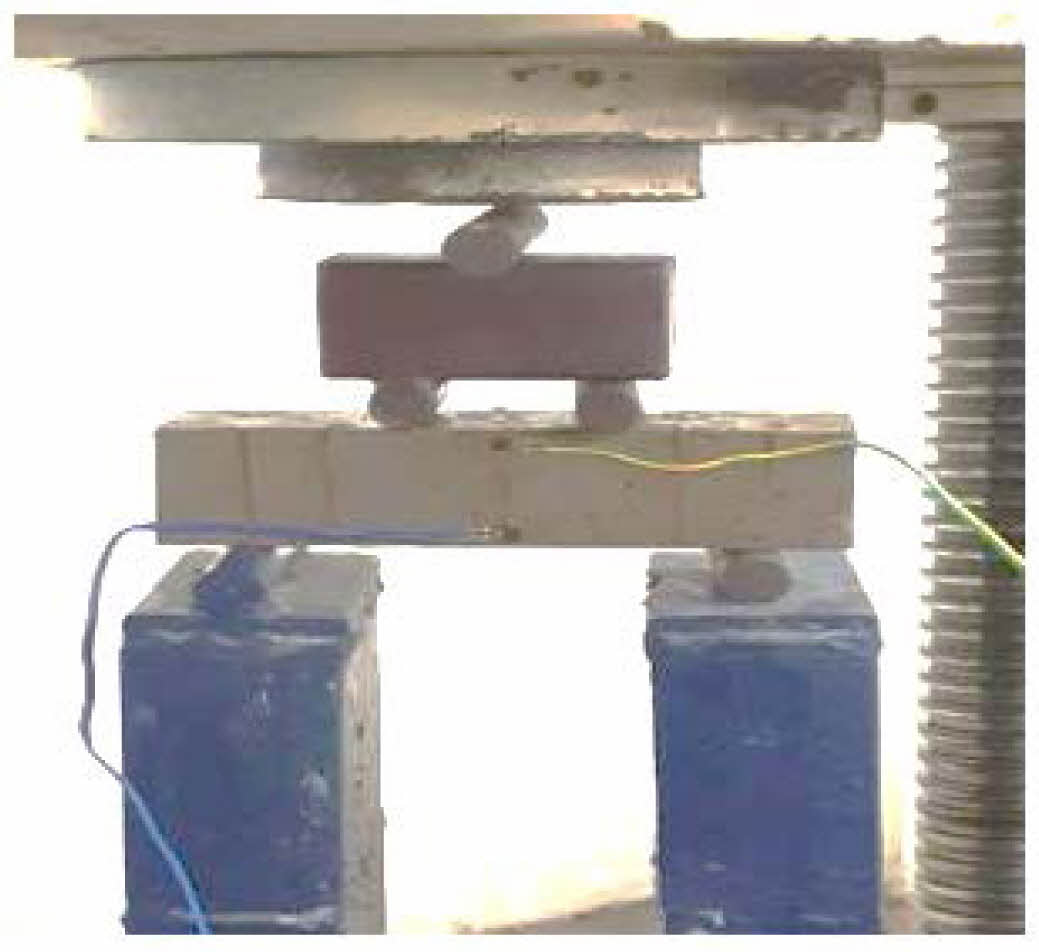
|
Fig. 3 Flexure Test Setup. |

|
Fig. 4 Specimen immersed in acid and base solutions. |

|
Fig. 5 Appearance of specimens after acid attack. |
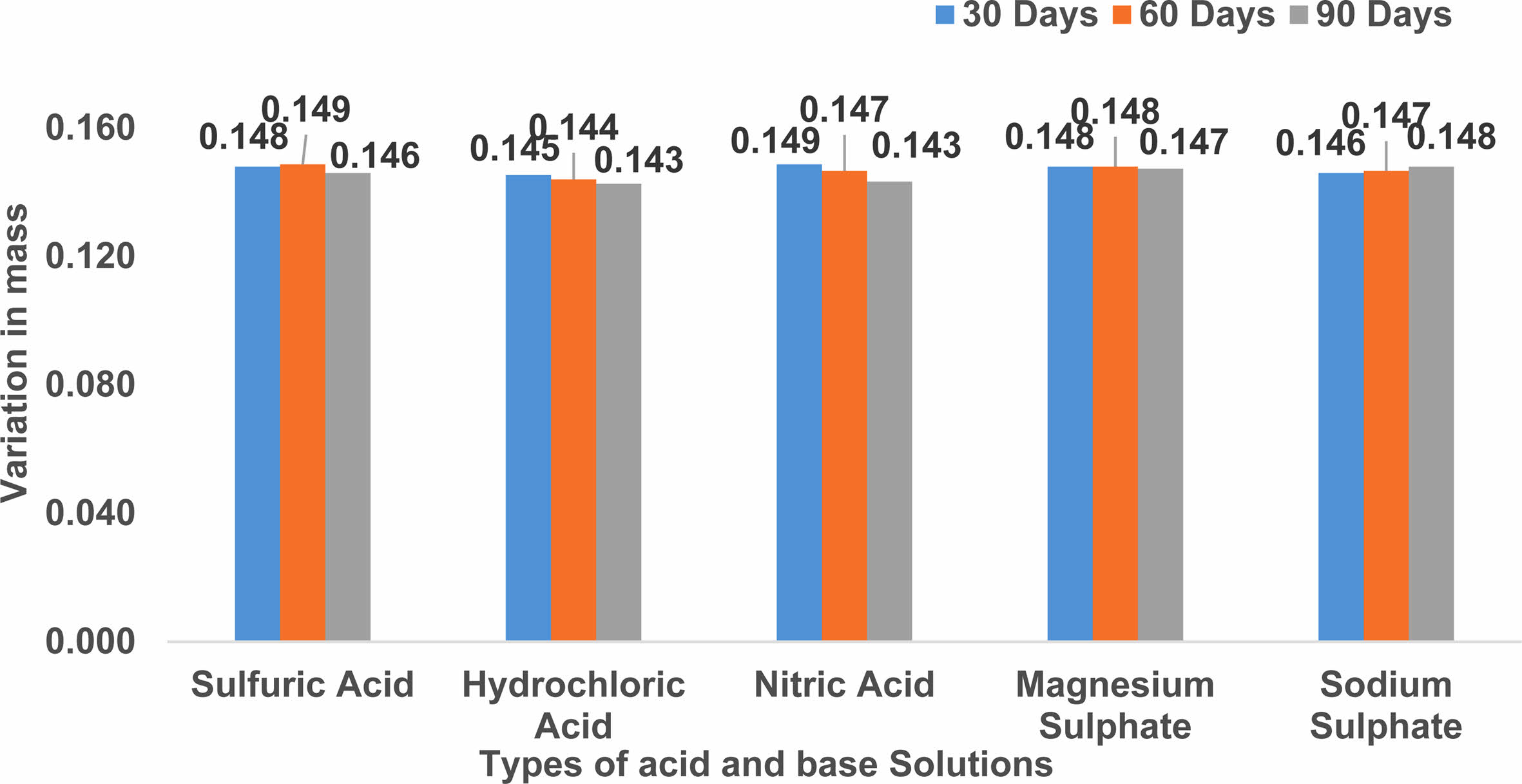
|
Fig. 6 Variation in massin acids and base solutions. |

|
Fig. 7 Compressive strength after immersion in acid and base solutions. |

|
Fig. 8 Testing of Cylinder. |
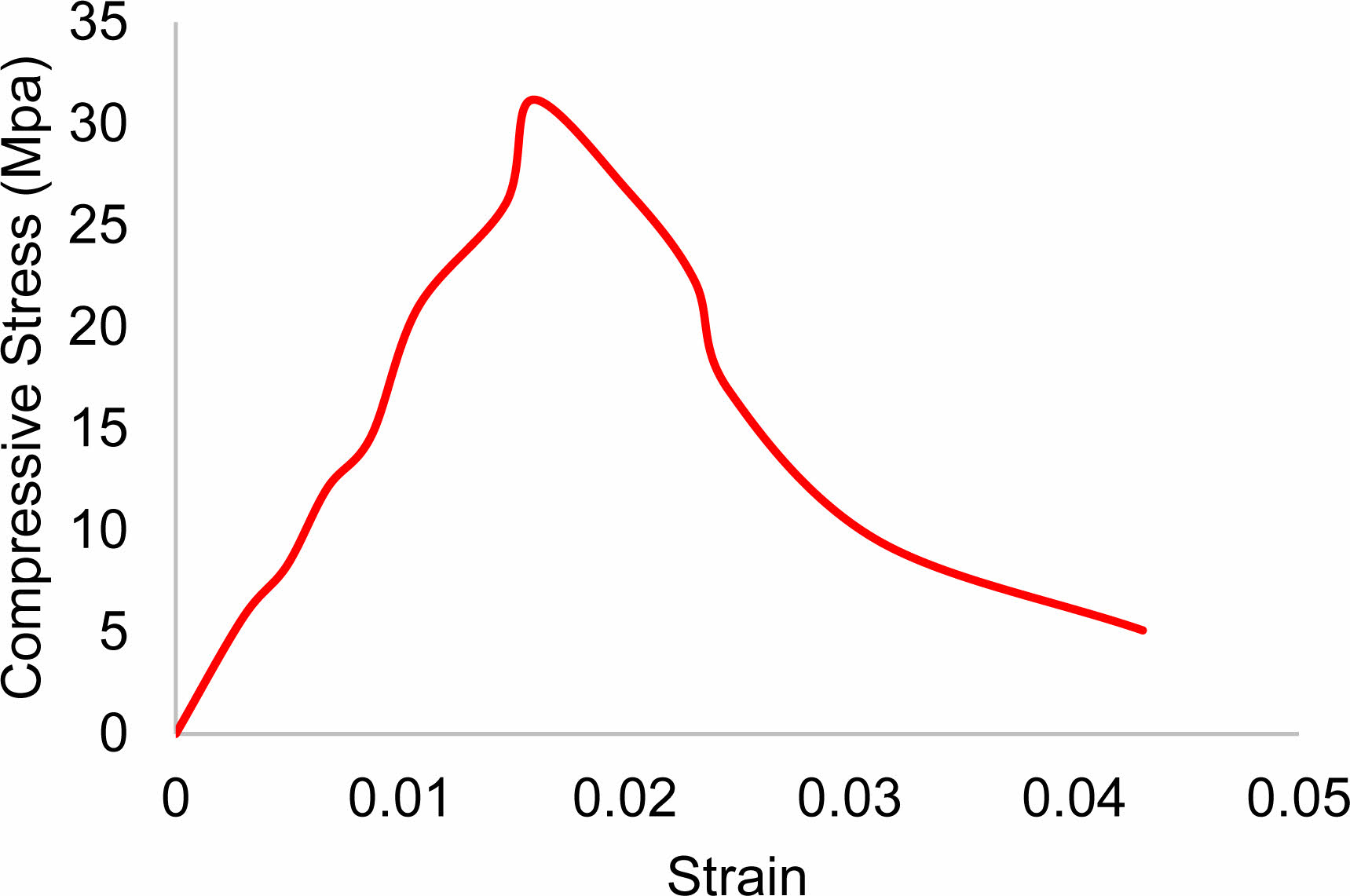
|
Fig. 9 Stress strain behavior of Vinyl Ester Resin Concrete. |
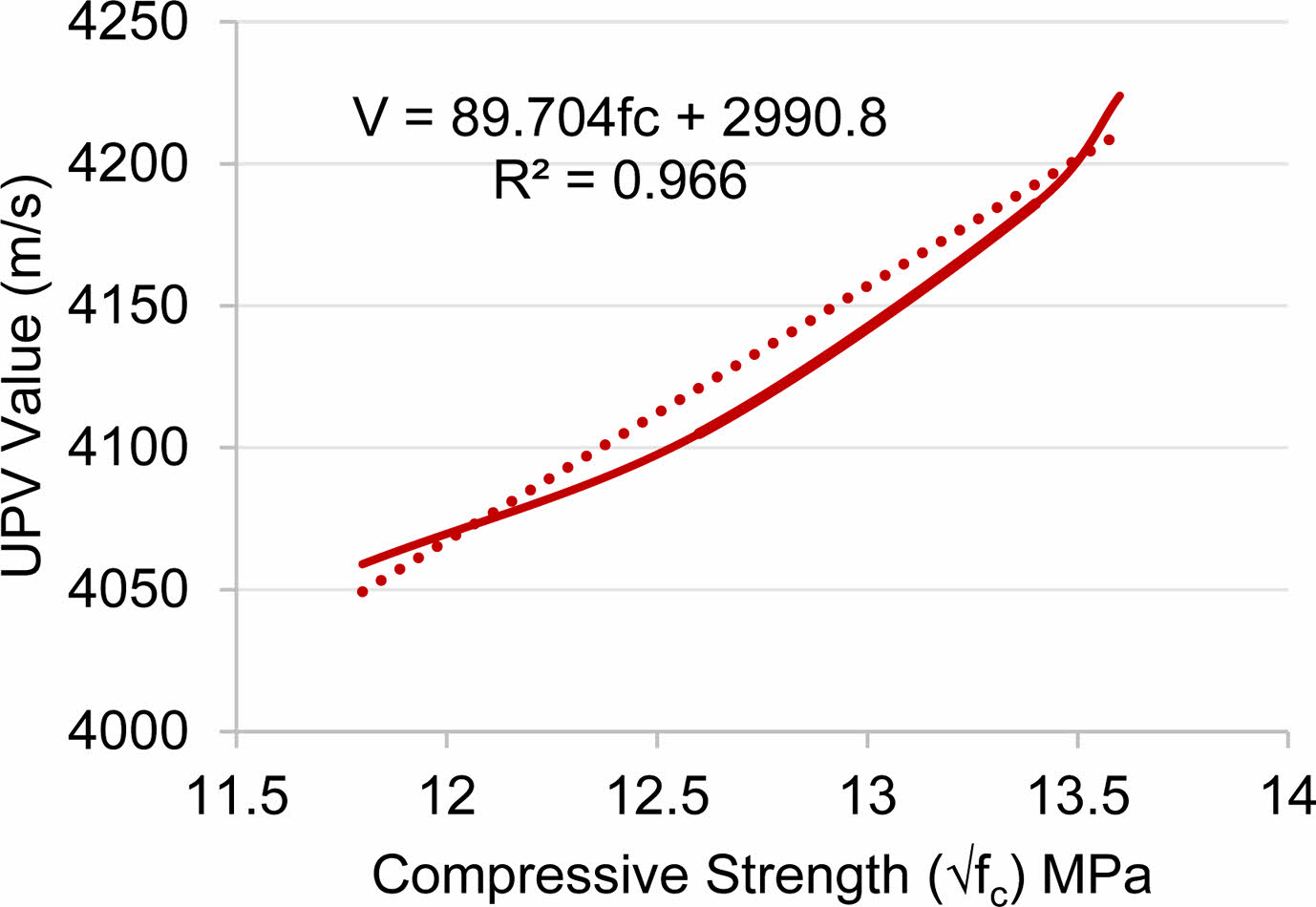
|
Fig. 10 Correlation of compressive strength and UPV values of Vinyl Ester Resin Concrete. |

|
Fig. 11 Correlation of compressive strength and Flexural Strength of Vinyl Ester Resin Concrete. |
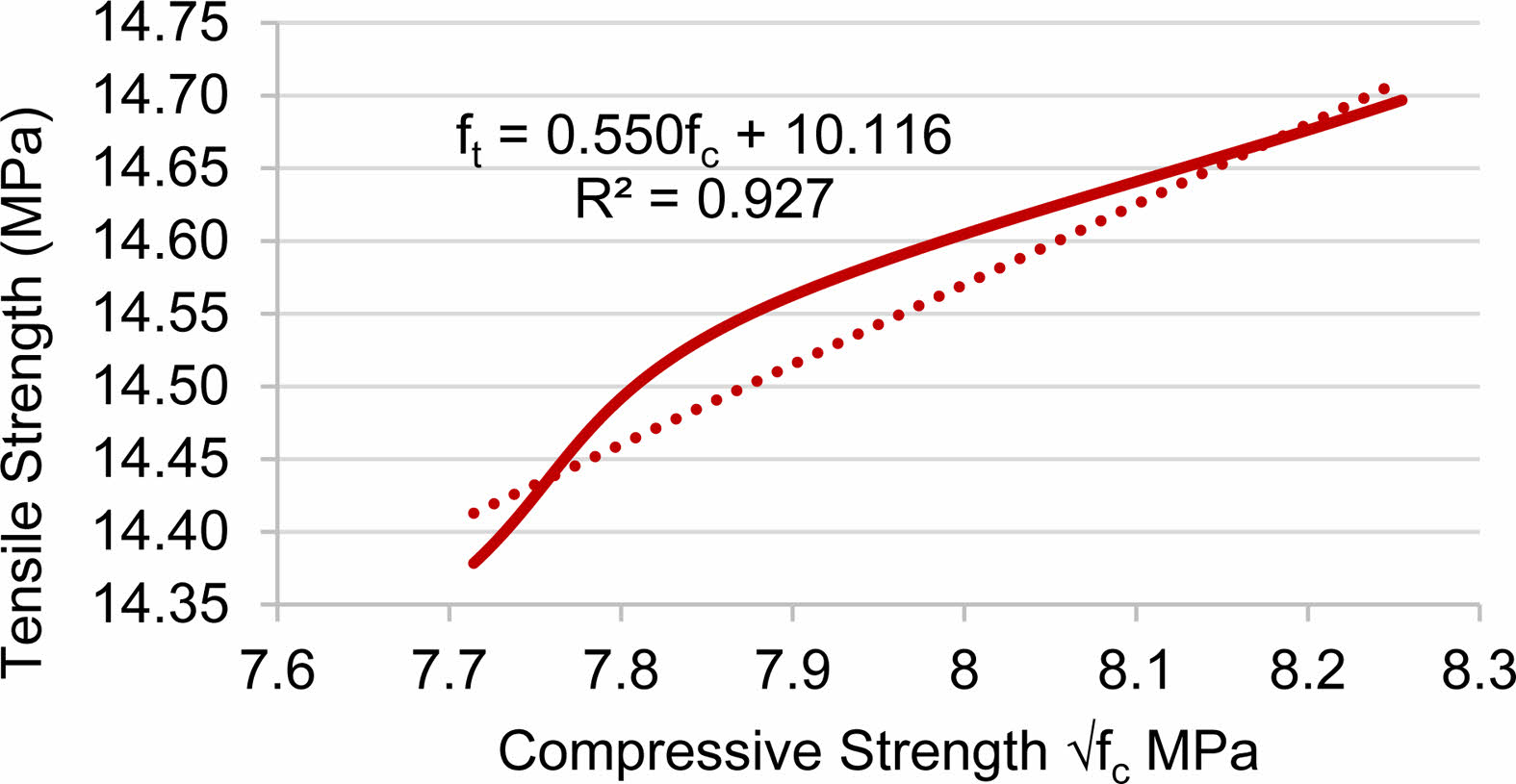
|
Fig. 12 Correlation between Tensile and compressive strength of Vinyl Ester Resin concrete. |

|
Fig. 13 Correlation between Tensile and Flexure strength of Vinyl Ester Resin Concrete. |
Vinyl ester resin is a kind of resin that is extensively used in coatings, adhesives, and composites. This study on vinyl ester resin is hydroxyl-substituted ethylenically unsaturated vinyl ester resin. Esterification of polyoxides with ethylenically unsaturated carboxylic acids yields these esters. Because the resultant vinyl esters include both unsaturated bonds and hydroxyl groups, they are extremely reactive and may be used in a variety of applications as concrete.
The developed vinyl ester resin concrete had a compressive strength of 70.0 MPa, Tensile strength of 14.70 MPa and Flexural Strength of 13.63 MPa for 12% of resin were obtained. The tensile carrying capacity of the polymer concrete is also high compared to cement based concrete.
Durability tests were performed on the created vinyl ester resin concrete, and it was discovered that the percentage drop in strength is 30% for acid solutions and 20% for base solutions. Similarly, the total specimens had a mass drop of 1% to 3% in acid solution and there is a neglible drop in base solutions. According to the observations, vinyl ester resin concrete is appropriate for storage structures in accordance with the codal requirements.
The stress strain characteristic of the developed polymer concrete is 3.1GPa confirming the concrete elasticity.
In comparison to alternative binder systems like alkali-activated materials and Portland cement products, Vinyl ester resin concrete has the highest durability, and the lowest chemical reactivity.
Unlike most other binder systems like alkali-activated materials, polymer concrete can be cured at room temperature and does not require special curing regimes.The developed resin concrete attained nearly 70% of their strength in hours to days.
So this concrete can be recommended for structural concrete to make chemical storage tanks and be used as concrete for any aggressive environment. Also developed concrete can also be used for repair works where immediate service is needed.
We kindly acknowledge the facilities provided by Easwari Engineering college to complete this research work through DRDO-RIC funded equipment and AICTE MODROB-funded equipments for testing and other experimental works. The authors wish to thank the Department of Science & Technology, Government of India, for funding the research infrastructure under the scheme entitled “Funds for the improvement of S&T Infrastructure (DST-FIST)” Ref.NO.SR/FST/college -2017/110(c).
- 1. P.C. Aicin, Cement and Concrete Composites. 25 (2003) 409-420.
-

- 2. J.P. Gorninski, D.C. Dal Molin, and C.S. Kazmierczak, Cem. Concr. Compos. 29 (2007) 637-645.
-

- 3. K. Chandrasekaran, L.P. Srinivasan, and N. Meyappan, Materials Today: Proceedings, 43[2] (2020) 1622-1625.
-

- 4. K. Chandrasekaran, L.P. Srinivasan, and N. Meyappan, Mater. Plast. 58 (2022) 158-170.
-

- 5. M. Golestaneh, G. Najafpour, G. Amini, and M. Beygi, Iran. J. Energy Environ. (2013) 304-310.
-

- 6. Standard test method for absorption of chemical resistant mortars, grouts, monolithic surfacing and polymer concretes C 413-01, in Annual book of ASTM standards 2001, American Society for Testing and Materials.
-

- 7. D.S. Vijayan, A. Mohan, J. Jebasingh Daniel, V. Gokulnath, B. Saravanan, and P. Dinesh Kumar, Adv. Mater. Sci. Eng. 2021 (2021) 1-12.
-

- 8. ACI 548.1R-97, “Guide for the use of polymers in Concrete”.
- 9. Code book IS 516: 1959, “methods of tests for strength of concrete”. 1959
- 10. Code book BS EN 12390-1:2012, “Testing hardened concrete Shape, dimensions and other requirements for specimens and moulds”. 2012
- 11. Code book ASTM D570-98(2018), ASTM International, West Conshohocken, PA, 2018”. ACI 515
- 12. 2R-13, ACI Journal, Proceedings 63[12] December 1966, pages 13051392.
-

- 13. Code book IS 13311(Part 1): “Non-Destructive Testing of Concrete - Methods of Test”. 1992.
- 14. Mohammad Alrwashdeh and Saeed A. Alameri, Energies, 15 (2022) 3772.
- 15. H.S. Seok, J.S. Cho, K.Y. Moon, and C.W. Hong, J. Ceram. Process. Res. 22[1] (2021) 25-30.
-

- 16. G. Prabha, A. Mohan, R. Dinesh Kumar, and G. Velrajkumar, International Journal of Intelligent Systems and Applications in Engineering 11(4s) (2023) 313-321.
- 17. Q. Tian, D. Sun, Z. Gu, and Z. Lv, J. Ceram. Process. Res. 21[3] (2020) 358-364.
-

- 18. X.Y. Wang, J. Ceram. Process. Res. 21[6] (2020) 622-631.
-

- 19. Aliff Akhmal Mohd Fazli, Siti Koriah Zakaria, Nur Iman Najwa Abd Rahman, Siti Zuliana Salleh, Abdul Hafidz Yusoff, Nurul Azita Salleh, Mustaffa Ali Azhar Taib, Faisal Budiman, Arlina Ali, and Pao Ter Teo, J. Ceram. Process. Res. 21[6] (2020) 667-682.
-

- 20. Z. Chen, J. Zhao, P. Li, A. Qin, Z. Gao, W. Zhao, S. Wang, and G. Li, J. Ceram. Process. Res. 24[1] (2023) 40-50.
-

- 21. A. Anitha, V.G. Kalpana, and P. Muthupriy, J. Ceram. Process. Res. 24[1] (2023) 182-189.
-

- 22. M. Chaitanya and G. Ramakrishn, J. Ceram. Process. Res. 24[2] (2023) 257-265.
-

- 23. Z. Tong, M. Li, D. Li, K. Wu, and X. Yang, J. Ceram. Process. Res. 24[2] (2023) 308-320.
-

 This Article
This Article
-
2023; 24(5): 884-893
Published on Oct 31, 2023
- 10.36410/jcpr.2023.24.5.884
- Received on Aug 11, 2023
- Revised on Oct 14, 2023
- Accepted on Oct 15, 2023
 Services
Services
- Abstract
introduction
materials and methods
results and discussion
conclusions
- Acknowledgements
- References
- Full Text PDF
Shared
 Correspondence to
Correspondence to
- M. Surendar
-
Assistant Professor, Department of Civil Engineering, Easwari Engineering College, Ramapuram, Chennai, India 600089
Tel : 9841442944 Fax: 04443923041 - E-mail: m.srndr@gmail.com







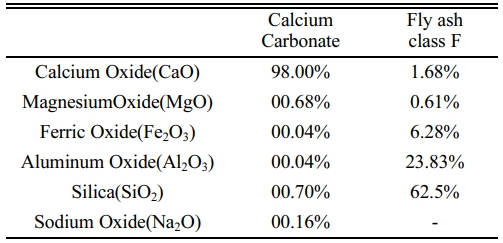
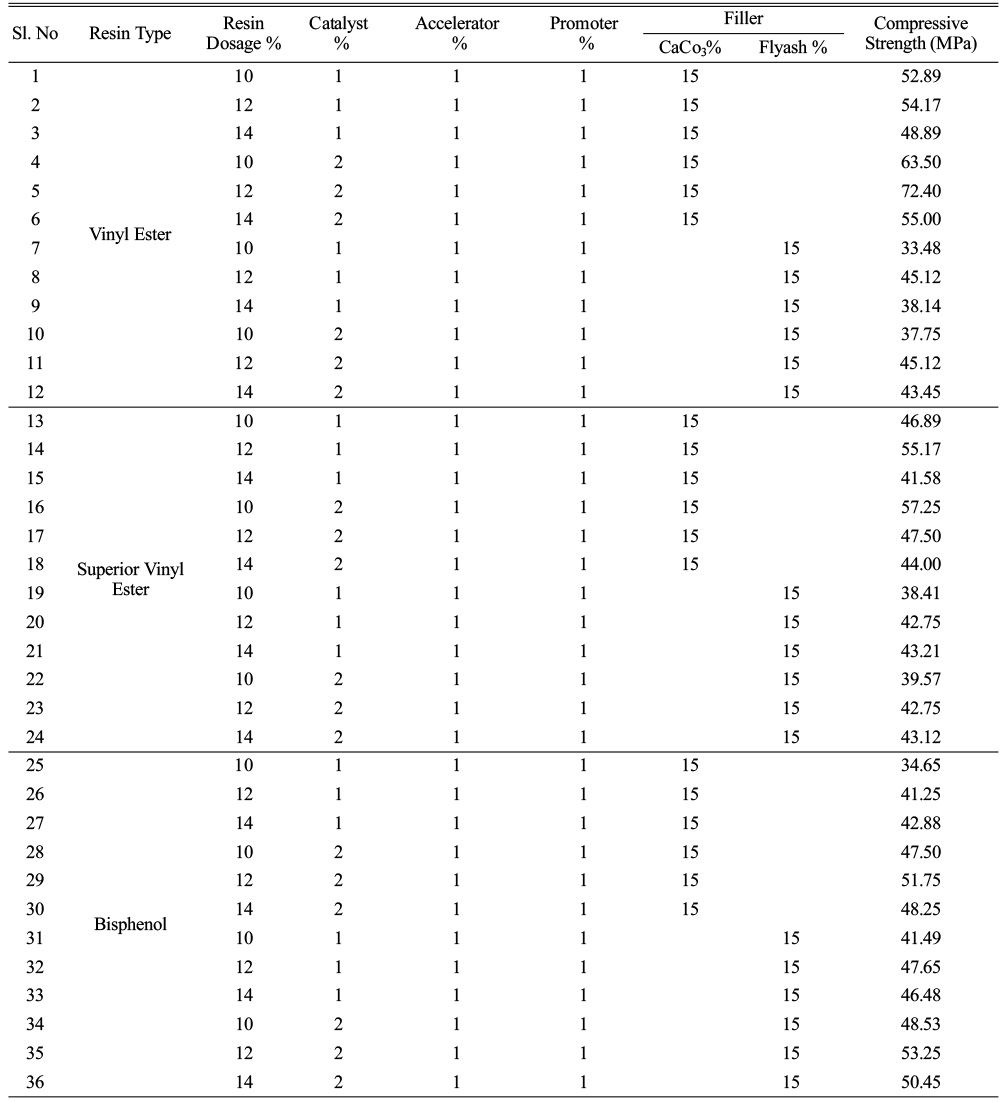
 Copyright 2019 International Orgranization for Ceramic Processing. All rights reserved.
Copyright 2019 International Orgranization for Ceramic Processing. All rights reserved.